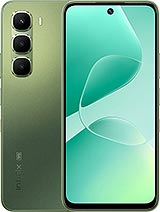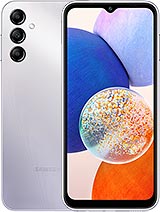Tecno Spark 20 Pro alternatives
Tap above to see alternatives.
Vivo T3x alternatives
Tap above to see alternatives.
Tecno Spark 20 Pro

Tecno Spark 20 Pro
-
Dimensity 6080
6 nm
-
5000 mAh
33W
-
6.78"
1080x2460 pixels
-
108 MP
1440p@30fps
- Specs
2x2.4 GHz Cortex-A76
6x2.0 GHz Cortex-A55
4x2.2 GHz Cortex-A78
4x1.8 GHz Cortex-A55
8GB 256GB (UFS 2.2)
6GB 128GB (UFS 2.2)
8GB 128GB (UFS 2.2)
8GB 256GB (UFS 2.2)
f/1.8, (wide), 1/1.67", 0.64µm, PDAF
2 MP
f/2.4, (macro)
f/1.8, (wide), PDAF
2 MP
f/2.4, (depth)
1080p@30fps
1080p@30fps
wide
f/2.1, (wide)
1080p@30fps
SIM1: Nano, SIM2: Nano
SIM1: Nano, SIM2: Nano (Hybrid)
2 5G bands
n3, n40
8 5G bands
n1, n3, n5, n8, n28, n40, n77, n78
In this performance comparison, the Vivo T3x with its Qualcomm Snapdragon 6 Gen 1 (4nm) performs better than the Tecno Spark 20 Pro with the Mediatek Dimensity 6080 (6nm), thanks to superior chipset efficiency.
Vivo T3x offers 2 years of OS updates, while Tecno Spark 20 Pro does not have confirmed OS update information. Vivo T3x receives 3 years of security updates, while Tecno Spark 20 Pro does not have confirmed security update information.
Both Tecno Spark 20 Pro and Vivo T3x use LCD screens. Both smartphones offer the same 120 Hz refresh rate. Vivo T3x also boasts a brighter screen with 1000 nits of peak brightness, enhancing outdoor visibility. Both phones have the same screen resolution.
Vivo T3x features a larger 6000 mAh battery, potentially delivering better battery life. Vivo T3x also supports faster wired charging at 44W, compared to 33W on Tecno Spark 20 Pro.
Vivo T3x offers better protection against water and dust with an IP64 rating.
- Vivo T3x – Check price here
¹ Scores can vary even with the same chipset due to RAM, thermals, and software optimization.










